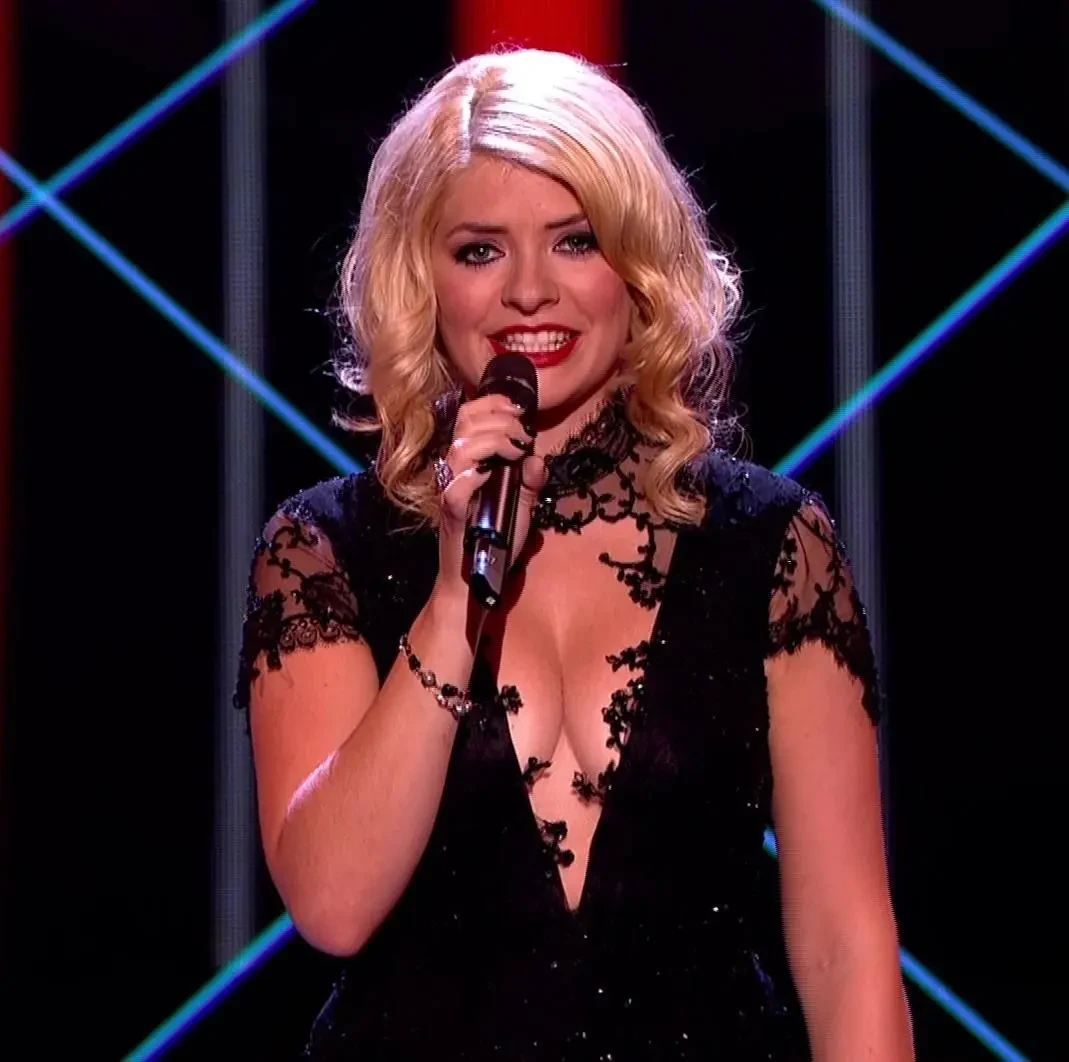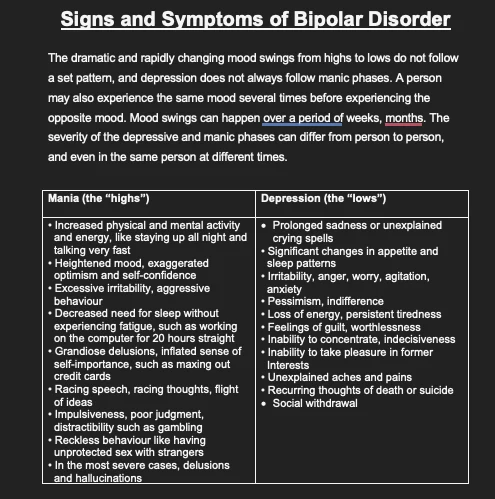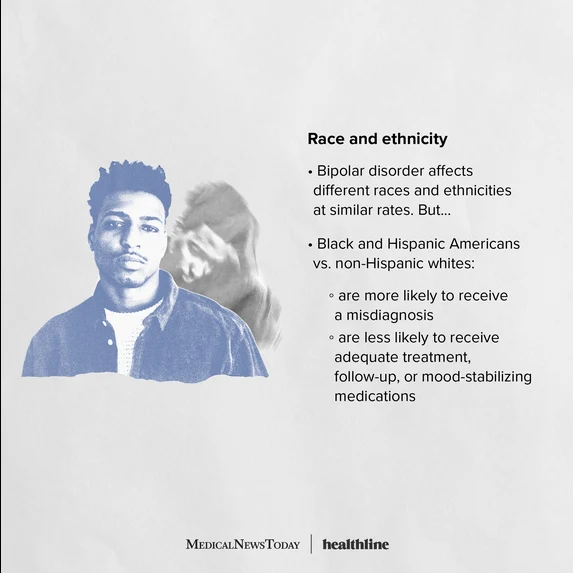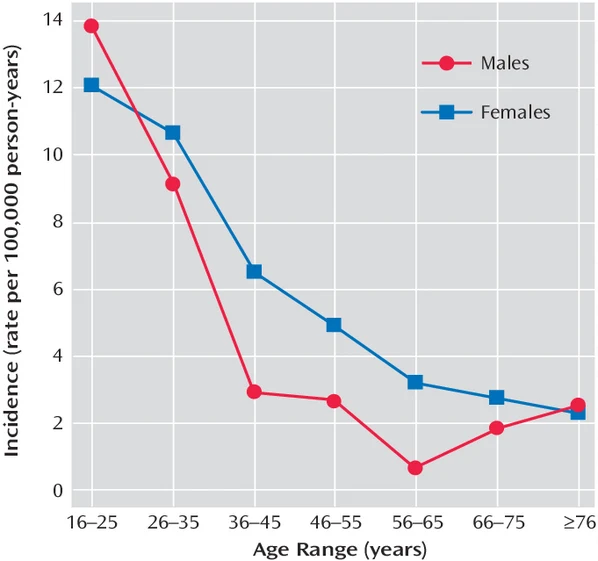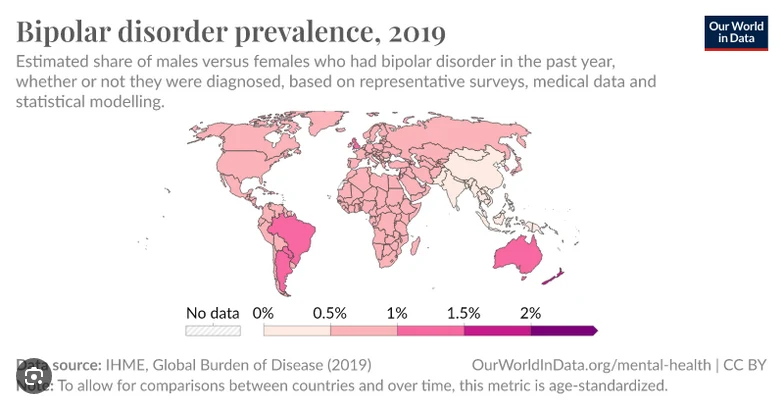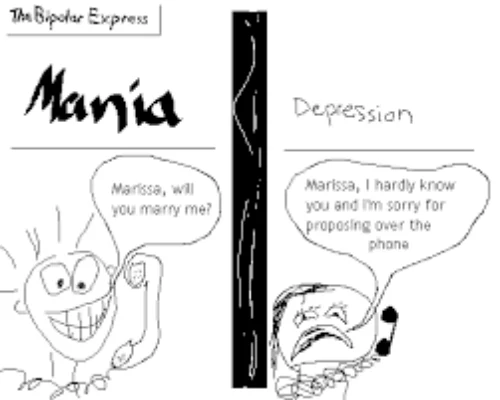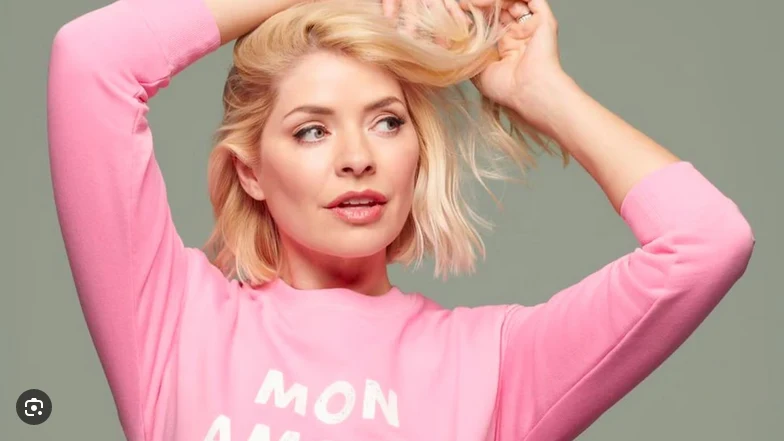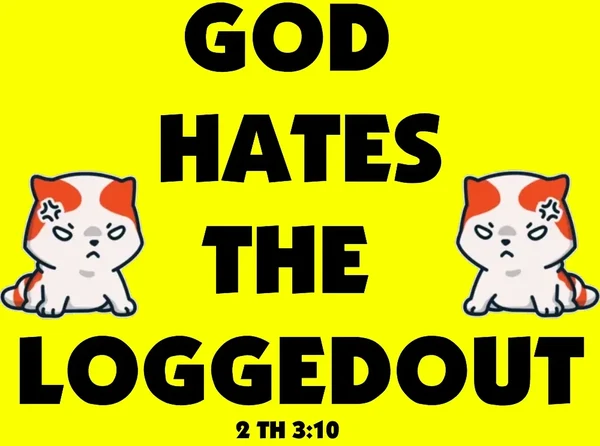- Patsy : rdramahistorian
- 2
- 9
No, it's not about that Indian b-word ruining Scooby Doo, this is far more interesting.
On 5 February 2018, the Chicago Board Options Exchange (Cboe) Volatility Index (VIX), after nearly a year of low market volatility, increased more than 100% in a single day—from 18.44 at open to 37.32 at close. This sudden spike led to sharp losses for short-term volatility investors who had bet that the VIX would remain low. Several high-profile exchange-traded products (ETPs) that deliver short volatility exposure destabilized or collapsed. Questions remain as to what may have led to the crash on a day that eventually came to be dubbed “Volmageddon”.
Short volatility ETPs had grown extremely popular in the preceding few years because they had profited from sustained low market volatility. Leveraged and inverse ETPs experienced rapid 30% annual growth over the previous decade, exceeding the 20% annual growth of the wider ETP space. The underlying VIX futures market for short volatility ETPs was very volatile. The average 90-day trailing volatility of the S&P 500 VIX Short-Term Futures Index was, on average, 64.0% between January 2007 and December 2017, compared with 17.4% for the S&P 500 Index. Also in late 2017, S&P 500 volatility reached historical lows, at approximately 6.8%.
The two most popular examples of inverse VIX ETPs at the time were the VelocityShares Daily Inverse VIX short-term exchange-traded note (XIV) and the ProShares Short VIX short-term futures exchangetraded fund (SVXY). Both ETPs tracked the inverse performance of the S&P 500 VIX Short-Term Futures Index (henceforth, “VIX Futures Index”).
Following particularly low volatility in 2017, the combined AUM of these funds had rapidly grown to $3.5 billion by early February 2018. In the 5th February price crash VIX rose by 102% and the VIX Futures Index rose by 72%. The two inverse ETPs that tracked the inverse performance of the VIX Futures Index (i.e., the XIV and SVXY) collapsed in the afternoon and suffered abrupt losses. Their prices crashed in the run-up to 4:15 p.m. Eastern time, the daily settlement time of the VIX futures market and the time when ETPs calculate their net asset values (NAVs). The ETP prices continued falling in the after-hours market. By the open of the next day, ETPs had fallen by 97%, according to Bloomberg data.
Many analysts had already argued that the rise of ETFs increased the volatility of the underlying assets as a result of noise. Crowded trades and volatility premium also played a part.
The Value Proposition of Inverse Volatility Products
The VIX approximately tracks the volatility implied by near-term options on the S&P 500 Index. Investing in VIX futures contracts enables investors to take a long or a short position on the future level of the VIX. The VIX Futures Index measures the returns of a portfolio of short-term VIX futures contracts with a weighted average maturity of one month to expiration. Inverse volatility ETPs offer investors the ability to take short positions against future values of the VIX by offering a return equal to the inverse return of the S&P 500 VIX Short-Term Futures Index. Investors in such ETPs profit from unexpected decreases in the VIX and lose from unexpected increases in it. Investors also typically profit in the absence of unexpected changes in the VIX. The reason is that the existence of a volatility risk premium, as well as the negative correlation between VIX movements and stock market movements, implies that futures are typically upwardly biased estimates of future VIX values.
Indeed, by January 2018, the two largest inverse volatility ETPs were the SVXY and the XIV, with total AUM of, respectively, $1.7 billion and $1.9 billion.
The SVXY was structured as an ETF, and the XIV, as an ETN. Both ETNs and ETFs sell shares to outside investors and promise the return performance of an index that they track. An ETF typically purchases and sells assets directly to track an index performance. In contrast, an ETN promises an index's return performance without the mandate to directly invest in assets that are related to the index it tracks. Thus, the ETN is more likely to offer a return profile without tracking error. As such, it relies on the issuer's ability to issue such returns and thus the issuer's creditworthiness. One of the main advantages of an ETN over an ETF for investors is, therefore, that an ETN typically pays out the exact index return rather than the return of the ETF's asset basket. One of its main disadvantages, in turn, is that the ETN is more vulnerable to the issuer's credit risk.
The popularity and interest in inverse and levered volatility ETPs may be surprising considering the view that these products are not well suited for buy-and-hold investors and hedging purposes. A key reason is that inverse ETFs and ETNs must maintain the same “–1×” exposure to their benchmarks every day. Analysts had also proved and showed that the associated daily rebalancing creates compounding mechanics that can lead to poor long-run performance. Accordingly, prospectuses of inverse ETPs specifically note that these products are not appropriate for providing the desired risk exposure for periods longer than a day.
However, these products may provide value to investors through strategies. Many noted that investors may invest in short volatility ETPs because they are seeking to diversify, are reaching for yield, or are chasing positive return performance.
The Ball Gets Rolling
A VIX ETP issuer who sells a short volatility product to investors will typically hedge by taking short posit ions in VIX futures contracts. Doing so ensures the issuer of a neutral position. Normally, the issuer will match the futures exposure with the cash received from investors (or its AUM). Because the fund seeks to deliver returns equal to –1× the benchmark index every day, the issuer needs to rebalance its position each day to ensure that the mark-to-market value of its short futures contracts matches the value of the fund's AUM.
The XIV ETN.
The XIV ETN sought to provide investors with a return mirroring the inverse performance of the S&P 500 VIX Short-Term Futures Index (VIX Futures Index).
In early February 2018, the value of the XIV's AUM stood at $1.86 billion. As a counterparty to buyers of the XIV, the XIV issuer effectively had a long exposure to volatility equivalent to a notional amount of $1.86 billion. To hedge the full exposure and remain neutral, the issuer took a short position in VIX futures with a total market value of $1.86 billion. This procedure would ensure that any change in the value of the liability to investors would be offset by markto-market changes in the value of the hedge position. Suppose, for example, that the VIX Futures Index rose by 10%. The value of the XIV's AUM would fall from $1.86 billion to $1.86 billion × (1 – 10%) = $1.674 billion, implying a reduced liability for the issuer. The issuer's short VIX futures position would also suffer mark-to-market losses and fall from $1.86 billion to $1.674 billion. Overall, the issuer's gain from a reduced XIV liability would be offset by an equivalent loss on its hedge position. Going forward, however, the issuer would not be neutral and would need to rebalance its hedge as specifically, the notional exposure of the issuer's short futures position increased from $1.86 billion to $1.86 billion × (1 + 10%) = $2.046 billion, and the issuer would need to reduce the exposure of the short position to $1.674 billion.
The issuer would need to buy futures because the value of its liability became $1.674 billion, not $2.046 billion. In the absence of trade, the issuer would have a mismatch on its balance sheet, with a short position in VIX futures that was too large relative to its XIV liability ($2.046 billion ≠ $1.674 billion).
As a result, the issuer would need to close out existing positions through the purchase of new VIX futures contracts to remain neutral. In our hypothetical scenario, the issuer would need to lower its short volatility exposure by buying VIX futures contracts for an amount of $2.046 billion – $1.674 billion = $372 million.
In case of a drop in volatility, the issuer would need to rebalance its hedged position by selling additional VIX futures contracts.
The SVXY ETF.
Like the XIV ETN, the SVXY ETF sought to provide investors with a return mirroring the inverse performance of the VIX Futures Index. To do so, the fund sold VIX futures with a notional exposure equal to the fund's AUM. For example, in early February 2018, the value of the SVXY's AUM stood at $1.7 billion and the fund was short VIX futures with a notional exposure of $1.7 billion. The value of the fund then fluctuated in line with the mark-to-market gains and losses on the short futures position.
A rise of 10% in the VIX Futures Index. The mark-to-market losses on the fund's short VIX futures positions would equal $1.7 billion × (–10%) = –$170 million, and the fund's NAV would accordingly fall to $1.53 billion. However, the notional exposure of the fund would have increased from $1.7 billion to $1.7 billion × (1 + 10%) = $1.87 billion.
Thus, even though the XIV and the SVXY differ in their structures—an ETN and ETF, respectively—both funds feature a need to rebalance their hedge posit ions each day. The fundamental reason is that both funds are leveraged, in the sense that the notional exposure of the fund does not fluctuate in line with the value of the fund. Ie like leverage from a bank and playing it in the markets your exposure and assets do not move in synchronicity. In this case it even diverges more and more 😴😴😴
Volmageddon
The disproportionately large market share in VIX futures contracts held by leveraged ETPs (e.g., XIV and SVXY) amplified the February 2018 volatility shock through their rebalancing mechanism and contributed to their collapse through a feedback loop,
On 5 February 2018, the VIX increased more than 100%, from 18.44 at open to 37.32 at close. This increase is one of the largest daily jumps in the history of the VIX and came after several years of low volatility.
Concurrently, the VIX Futures Index rose throughout the day.
As discussed in the previous wordsX3 sections, this increase in volatility led to a drop in the value of inverse volatility ETPs' AUM and a simultaneous increase in the notional exposure of their short VIX futures positions. To remain market neutral, the SVXY fund and XIV issuer needed to buy VIX futures contracts to match their short volatility exposure with the reduced value of their fund's AUM. In deep markets with sufficient investors, the purchases of VIX futures contracts by ETP issuers with similar rebalancing needs would have had a minimal impact on the prices of VIX futures.
However, in January 2018, the XIV, the SVXY, and other ETPs with similar rebalancing needs after market hours jointly held a significant portion of the market. The market concentration was so significant that the purchase of VIX futures contracts as a result of rebalancing created further upward pressure on VIX futures prices and a feedback loop that would ultimately reduce the value of the ETPs' AUM significantly. Specifically, the purchase of VIX futures would have significant positive effects on futures prices and lead to further drops in the SVXY's and the XIV's AUM. The result would be the need for more rebalancing that would lead to even further drops in AUM.
Lesson for r-slurs:
Why do they mean by rebalancing. 😵💫😵💫😵💫
You have given me $10 (your net worth) to short shares. I short 10 shares of $1 and receive $10. My liability to you is $10, my assets under management/exposure (since I have to buy them back within a time frame) is $10.
Now let's suppose the share prices rise by 10%. So the 10 shares I have sold now would cost $11 to buy back. Accordingly I would exhaust the $10 I have got from short selling those shares and use $1 of your money. So your assets (my liability) take a hit of 10% (you're only left with $9) 😭😭😭 and my exposure increases to $11. This is why even though I haven't taken any loan, I am leveraged, since my AUM and exposure diverge more and more.
If you want to learn more, DM me, I'll send you some adderall
Anyway,
The ETPs traded from a 9:30 a.m. open to a 4:00 p.m. close, and by 4:00 p.m., the VIX Futures Index had increased by 39%. As noted previously, both ETPs tracked the inverse of the performance of the VIX Futures Index. Therefore, the increase in the VIX Futures Index increased the value of the combined short volatility exposure of the ETPs from $3.5 billion to $4.8 billion (+39%) by 4:00 p.m. At the same time, the AUM of the SVXY went down from $1.68 billion to $1.04 billion and the underlying value of the XIV went down from approximately $1.86 billion to $1.15 billion (–39%). The value of their combined AUM at 4:00 p.m. was, therefore, approximately $2.2 billion ($1.04 billion + $1.15 billion).
By this time, it was apparent that both ETPs would need to trade a significant number of contracts to remain hedged. Indeed, at 4:00 p.m. prices, the total short exposure in VIX futures contracts that the ETPs would need to close out amounted to $4.8 billion – $2.2 billion = $2.6 billion. In light of this, fund managers would have begun rebalancing before 4:15 p.m., the time when the funds calculate their NAVs and when the VIX futures market closes. This additional demand for futures contracts resulting from hedge and leverage rebalancing likely contributed to the significant increase in futures prices between 4:00 p.m., following the market close for the XIV and SVXY, and the close of the VIX futures market.
It didn't help that the needed number of contracts represented a significant fraction of open interest and volume. For example, in January 2018, the VIX futures market recorded a total open interest of 600,000 contracts, with an average daily trading volume of 400,000 contracts recorded over the five days preceding 5 February 2018 (Cboe 2020). Thus, the contracts needed for hedging and leverage rebalancing represented about 23% (93,000/400,000) of the average daily trading volume in volatility futures contracts and nearly 16% of every contract outstanding (93,000/600,000).
The rebalancing activities of other ETPs, such as 2× volatility futures funds, likely contributed additional upward pressure on VIX futures prices.
AI may also have kicked volatility dabblers in the nuts as High-frequency trading (HFT) also potentially contributed to the crash of short volatility ETPs, especially considering that the average holding period for short volatility ETPs is about 0.88 day.
Conclusion
In February 2018, a spike in market volatility led to a one-day loss of more than 90% for investors in inverse volatility ETPs. This even shows how leverage and hedge rebalancing, coupled with large market concentrations, can lead to sudden collapses of levered investment structures and significant losses for outside investors.
Post Script (Not my words)
Uninformed investors might assume that the leverage returns are generated on a continuous basis, so that if an underlying index is up 5% for a month, the double-leveraged ETF will be up 10% for the same month; if the index is up 10% for 6 months, the ETF will be up 20%, and so forth. That is absolutely not the case. The leverage is determined on a daily basis and the returns for any other period usually will not be double or triple the underlying index.
In order for the leveraged funds to achieve appropriate levels of assets so they can provide their implied leverage, they have to rebalance daily. In the case of an ETF providing long 2-times leveraged exposure, they would typically attain exposure to a notional set of assets equal to 2 times their NAV. An example would be an ETF that takes in 100 units in assets that does a swap with a counterparty to provide exposure to 200 units in performing assets. The rebalancing activity of these funds will almost always be in the same direction as the market.
In essence, a leveraged ETF is essentially marked to market every night. It starts with a clean slate the next day, almost as if the previous day had not existed. This process produces daily leverage results. However, over time, the compounding of this reset can potentially vary the performance of the fund versus its underlying benchmark. This can result in either greater or lesser degrees of final leverage over individual holding periods.
- 26
- 44
As you probably know by now, I'm a sick, sick man. I am diagnosed with Bipolar II disorder along with OCD. This has affected my life negatively, but I'm still alive which more than many can say. Today, I'm going to explain the ins and outs of Bipolar Disorder. I hope you enjoy the short read.
What is Bipolar Disorder
Bipolar disorder is a mental disorder characterised by mood swings. In other words, the sufferer may have periods of great euphoria followed by an irrational manic-depressive episode. During the upswing, a Bipolar patient will experience the following:
euphoria
high motivation
irritability
risky behaviour
heightened sexual activity
I am currently in an upswing and I have very little need for sleep. Five hours or less is enough for now, which is partially why I have time for this shit. I also feel highly productive and cannot stop myself from producing something. I wish I was a genius so I could channel this energy into something other than rdrama posts that 12 people will upvote and cause 3 people to block me. After the upswing comes the downswing which consists of depression, suicidal thoughts, a lack of motivation, and self-harm. How much self-harm? It is estimated that 30-40% of folks with Bipolar Disorder will engage in self-harming behaviour. Upswings and downswings are usually not congruent with what is going on in the person's life. For example, someone with a good life may find themselves in a downswing while others may experience a euphoric downswing as they ruin their life.
Quick notes from Holly!
Holly says to take benzos, avoid sleep, play The Last of Us Part 2, and listen to Cocaine 80s. In between these activities, make shitposts on rdrama.
How quickly do these mood swings occur? Well, it depends on what kind of Bipolar disorder one suffers from. With Bipolar I and II, each upswing and downswing can last weeks to months. However, there exists rapid cyclic bipolar which is typically characterised as a series of 4 or more upswings or downswings occurring within a 12-month period. Symptoms typically begin to manifest in one's early twenties, though signs may appear during teen years or it could onset in one's late twenties.
Difference between Bipolar I and Bipolar II
Though Bipolar I and II share many similarities, there are some key differences. Most notably, one can only be diagnosed with Bipolar I if they experience a manic episode. A manic episode is characterized by psychotic symptoms such as visual and audio hallucinations. Other symptoms include:
racing thoughts
disinhibited social behaviour
hypersexuality
feelings of grandiosity
pressured speech
For example, someone may feel that they are receiving messages from God, hear divine voices calling their name, believe they can change the world, or are on a special mission. With the propensity for risky behaviour comes increased drug use and risky sexual behaviour. Such individuals typically end up requiring involuntary institutionalization, and they demonstrate decreased activity in the lingual gyrus region of the brain and decreased activity in the inferior frontal cortex. In contrast, Bipolar II patients suffer from hypomania which is more subdued and less likely to ruin someone's life, but is nonetheless still highly disruptive. They do not experience the psychotic aspects of mania and do not usually require hospitalization during a hypomanic episode.
What goes up must come down. When the mania or hypomania is up, we get to the depressive stage. This is usually a period filled with great regret, melancholy, and a downswing in one's mood. This period is usually longer than the hypomanic or manic phase and this is when the self-harm and suicidal ideation slips in. Activities that were once enjoyed now feel dull, and constant sleep is common. During one of my downswings this year, I had to be hospitalized after severe self-harming.
But wait! There's a third option! Some people suffer from mixed affective state. This is when a person experiences an upswing and downswing simultaneously. This is common in patients with rapid cyclic bipolar where the mood swings occur so quickly, they don't have time to resolve.
What causes Bipolar Disorder
It is currently not known precisely what causes Bipolar Disorder though it is estimated that it is 70-90% genetic with a minimal environment factor. For example, an abusive childhood can aggravate the condition or a significant life event such as the loss of a loved one.
Scientists have zoned in on variants within the genes CACNA1C, ODZ4, and NCAN, and polymorphisms in BDNF, DRD4, DAO, and TPH1. The end-result is dysregulation in the dorsolateral prefrontal cortex portion of the brain.
Treatment of Bipolar Disorder
Bipolar disorder is treated through a combination of therapy and medication. Currently, I am on lithium (a controversial mood stabilizer) and Abilify (an antipsychotic). Previously I have also been on sodium valproate and serdep. And of course, I have been given a plethora of benzodiazepines. Typical therapy methods include CBT (cognitive behavioural therapy) and DBT (dialectical behavioral therapy).
It is difficult to treat Bipolar disorder because those with the illness are often in denial about it and resistant to treatment. This is especially true during manic episodes. Hence, more than 75% of individuals with BD inconsistently take their medications for various reasons.
Bipolar Disorder memes and infographics
Conclusion
I hate being bipolar. It's awesome.
Tune in next time when I discuss the function of the foreskin or the Beat Generation or some shit.
- BananaSundae : check my comment, it's rlly funny
- TournamentFishing : eh it's alright
- Wuzizname : Comment sucks. Reported for false advertising
- 74
- 67
Previously, I had declared my feelings of affection to a female friend of mine (let's just call her Sarah because her name is Sarah). The feelings were not reciprocated, but she let me down in a weird way, she spoke about how she doesn't know how she feels, but she's not looking for a relationship at the moment. She embraces the asexuality meme which is partially how we ended up being friends.
More recently, I decided to give it another shot but to be more tactful this time. I told her I don't think I'm asexual anymore, and that I want to be in a relationship. Once again, she reiterated that she doesn't know how she feels and that a relationship isn't what she wants. Nevertheless, as always, she was nice about it and continues to actively pursue my friendship and constantly tells me she loves me.
At first, this confused me. However, I think I have some of it figured out. I have learned a bit about women and human relationships in general from this experience, and I'd like to share some of the reasons why it's almost certainly a bad idea to pursue your female friends. Now, of course there will be exceptions. Sometimes your female friend genuinely does like you and you'll have a romcom moment. My point is that that's probably not the case, and while you may view the friendship with rose-tinted glasses, she sees things totally differently.
1. They're used to it
Since they started developing breasts, women have been the center of sexual attention. It comes from all angles including older men, teachers, family members, and even other women. At some point, they get used to it and it becomes background noise. "Yes, he's ogling my breasts but I need to finish scanning my groceries".
The sexual attention also comes from male friends. You're NOT the first male friend to express romantic emotions, and you won't be the last. She's turned all of them down, what makes you think things will be different with you? She's used to it, she probably saw it coming, and she doesn't want it. If she did, you wouldn't have to ask because she'd make it obvious to you that she's romantically interested.
Now, there is the possibility of misreading signals, which brings us to the next point.
2. Women genuinely have platonic feelings
This is not to say that men are incapable of having platonic relationships. Nay, that is not my point. My argument is that it is much harder for men to do so. People shit on Steve Harvey but he was 100% correct when he said the following:
Things aren't the same with women. They can genuinely love you deeply without any sexual or romantic feelings. Why is this? Women don't have to deal with the famine mentality. For many men, s*x and love are scarce resources, so when it even vaguely seems like there's an opportunity for it, the feelings come on strong. Hence the cliche of "the cashier smiled at me now I want to marry her". (Most) women aren't leading you on intentionally when they allow intimacy into a friendship. That's the way friendships should be. But it doesn't mean she wants anything sexual or romantic.
3. You're in love because you're lonely
This is probably the crux of the issue. When you're starving, even a mud pie looks delicious. As men, you will face long stretches of loneliness and never being told you're beautiful, attractive, or worthy of anything. Inasmuch as catcalling and sexual objectification should be chastised, it at least serves as some kind of validation of one's attractiveness.
A friendship with a woman can bring about those feelings of validation within men and if you're not ready for it, it's going to develop into obsessive love. If you had higher self-esteem, more experience with women, or a source of love, your friendships with women would be completely normal and platonic. It's when these elements are missing that any smile, hug, or eye-gaze turns into fantasies of marriage.
When she inevitably turns you down, what are you left with? Nothing yet again. Nobody to say they love you or assure you that you are wanted in this world.
Things get more complicated if you're an introvert. Most relationships seem useless unless you're benefitting considerably. In your mind the thinking is "I'd only put this much effort into a relationship if I had romantic feelings". Whereas if the woman is an extrovert, it isn't costing her much mental energy to maintain the relationship. I hope that make sense.
4. She knows already
Don't bother. She already knows you like her. She accepts that as part of the cost of the friendship. That's not a bad thing. It means there's something good about you that she wants in her life even if its not of the romantic nature. You should be flattered by this even if it is heartbreaking at times.
Some women are a bit mean with this. They essentially get everything they would get from a boyfriend (someone to talk to, someone to take care of them) without the need to commit. But that's not always the case. In my case, Sarah goes out her way to be nice to me and to spend time with me. She's not using me for anything - a genuine, platonic friendship is all she wants. It's hard for my brain to wrap my head around it. I thought it was obvious that she felt something. Maybe I had to take the lead and break the ice? Nah, I'm convinced she knew ages ago I liked her but loved me enough to still be my friend despite not sharing romantic feelings.
5. You may lose everything
Life is about taking risks so I don't want to stress this point too much. However, if she doesn't already know and you spring it up on her, she may never trust you again and you will lose all the intimacy of your friendship. She will remain guarded around you, and perhaps even think of you as a slimy coomer who tried to use friendship to get into her pants. Shit can get brutal.
I've been lucky to have an understanding friends who has continued to be nice to me. I know that this isn't the case for everyone, and it also depends on how you respond to the rejection.
CONCLUSION
Heartbreak is one of the worst feelings to experience. It's like a knife constantly twisting in your chest. But it's part of life for most of us. A lucky few will find high-school sweethearts and never have to play the dating game, but for most of us, we're going to get rekt a couple times before we find the right one (if we ever do). Please, for the love of god, don't go looking for a girlfriend from your female friends. There's a difference between a girl friend and a girlfriend.
I'm probably preaching to the choir, and this may be obvious to most people here. But I know there are some autists who may need to read this to spare themselves the heartache I went through. The funny part is that if you're in love, nothing I write is going to change anything. You'll think your case is different. You'll try your luck. And you'll get rekt. But don't let me stop you. Some mistakes are meant to be made.
I know the asexuality meme isn't true. One day, she'll find a guy she likes (not me) and all that asexuality shit will disappear. And when it happens it will hurt like heck. However, I'm prepared, and I'll still be her friend. I'm wiser now thanks to the mistakes I've made. Thanks for reading.









